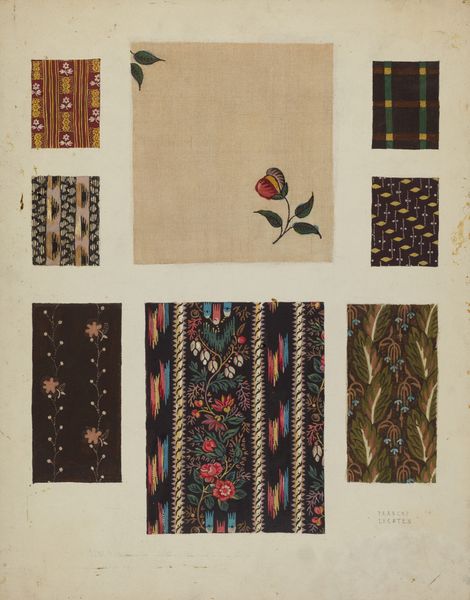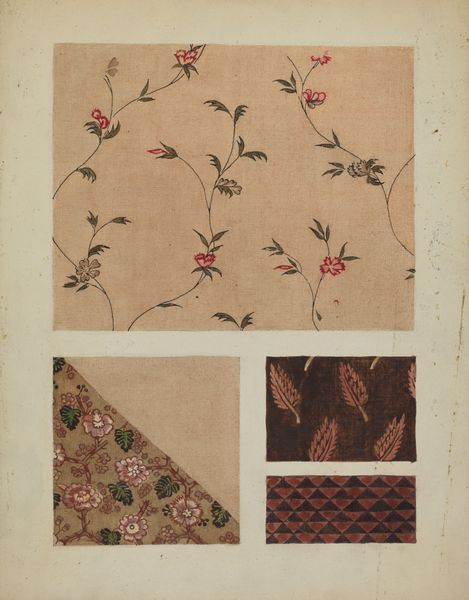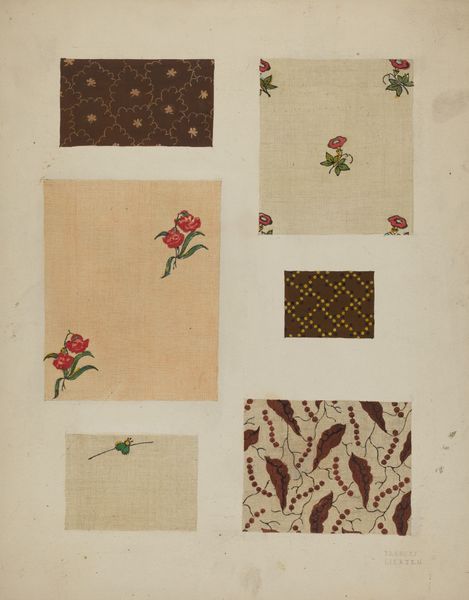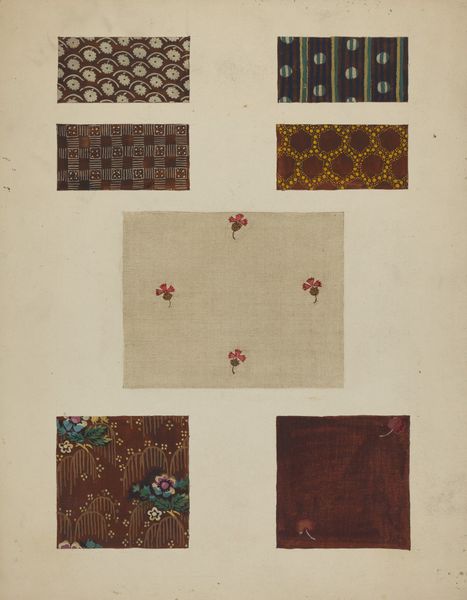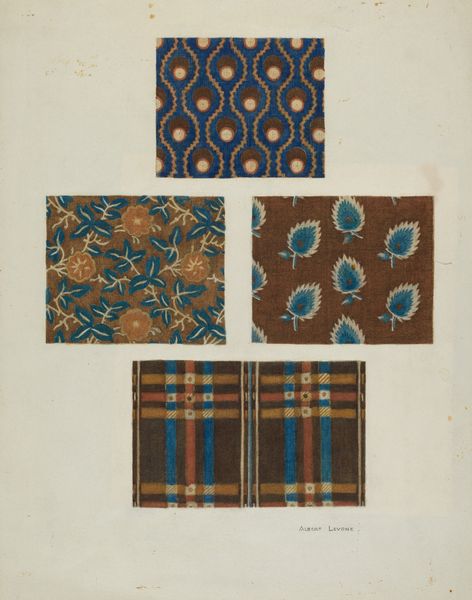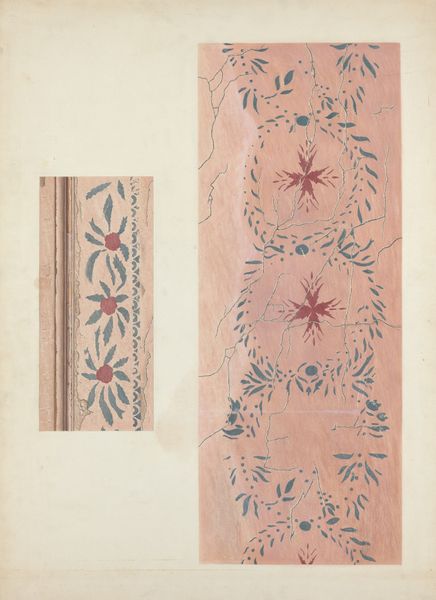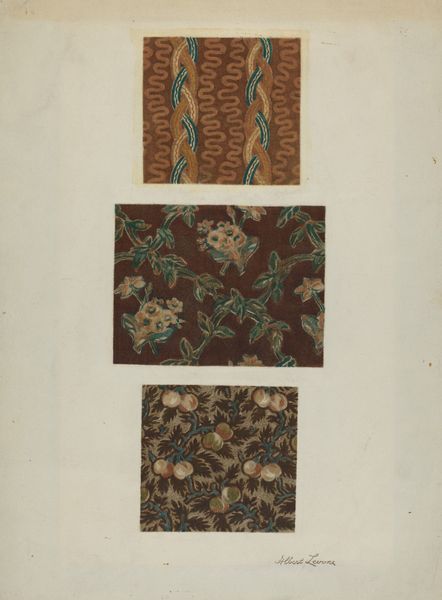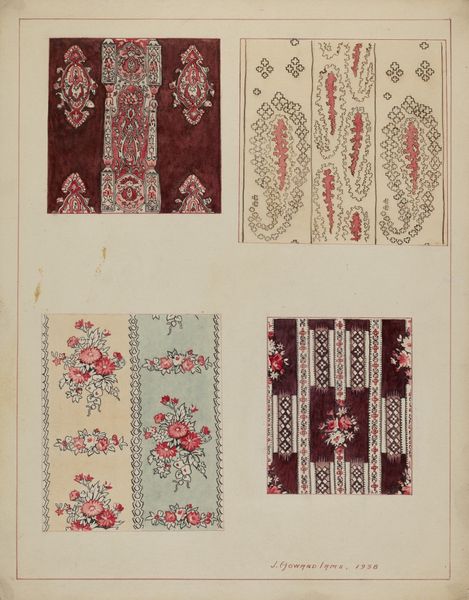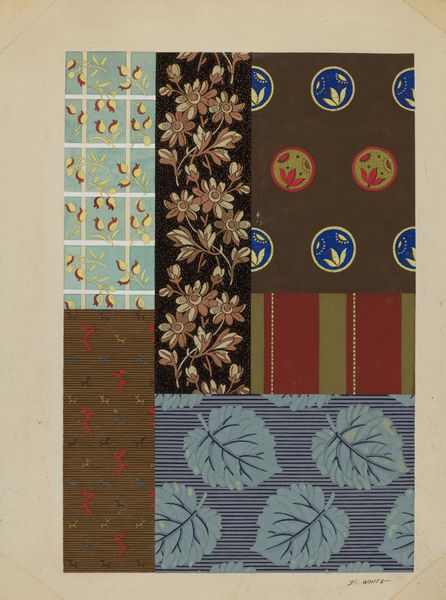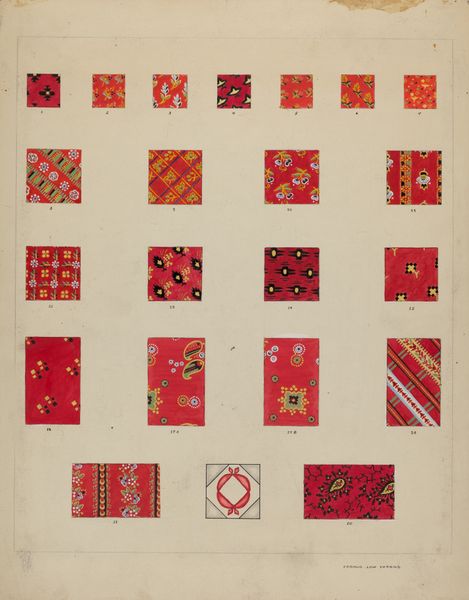
drawing, textile, paper, watercolor
#
drawing
#
textile
#
paper
#
watercolor
#
textile design
#
decorative-art
Dimensions: overall: 35.2 x 28 cm (13 7/8 x 11 in.)
Copyright: National Gallery of Art: CC0 1.0
Curator: What strikes me most immediately about this work is the incredible control of color and line, even within seemingly simple designs. Editor: I agree, it’s a quiet piece at first glance, isn’t it? But on closer inspection, the composition vibrates with the domestic artistry that shaped everyday life in mid-century America. We’re looking at Frances Lichten’s “Materials from Patchwork Bedspread,” dating to about 1936. Lichten rendered these designs in watercolor and drawing on paper. Curator: The visual harmony here is deceptively simple. Note the variety of patterns: florals, stripes, checks, and geometric grids. Lichten organizes them in a seemingly haphazard yet carefully balanced composition, inviting our eye to dance across the surface. Editor: Precisely! The work speaks to the broader history of textile design as a form of women's art. The very act of quilting, creating warmth and beauty from scraps, became a powerful mode of self-expression. There are notes of traditional Dutch design in the blue checks that Lichten may have encountered in the decorative arts in rural Pennsylvania. Curator: That use of vernacular motifs gives the work so much life. The floral sprigs and primitive geometric grids speak to different aesthetics but merge with a cohesive artistic language. Look at the repeated motifs and restrained color palette. The delicate interplay between figure and ground demonstrates her grasp of design principles. Editor: It reminds us that what may appear simple on the surface, when examined closely, offers access to a whole world of aesthetic concerns. Lichten worked as an author and collector, celebrating folk traditions while participating in the world of mid-century craft design. Curator: For me, the act of re-presenting these materials as an artwork raises fundamental questions about representation. Are we looking at documentary evidence of designs, or something more subjective? Editor: We must see this not just as record-keeping but also as a conscious act of aesthetic arrangement by an artist deeply attuned to the social meanings and beauty embedded in everyday objects. A beautiful distillation. Curator: Ultimately, the effectiveness of Lichten’s choices lies in how she presents the past within her current aesthetic landscape. Thank you for illuminating the socio-historical dimensions here. Editor: And thank you for helping me see how Lichten uses elements of color and texture. Hopefully, this conversation encourages visitors to question their preconceptions about both historical crafts and formalist practices.
Comments
No comments
Be the first to comment and join the conversation on the ultimate creative platform.
